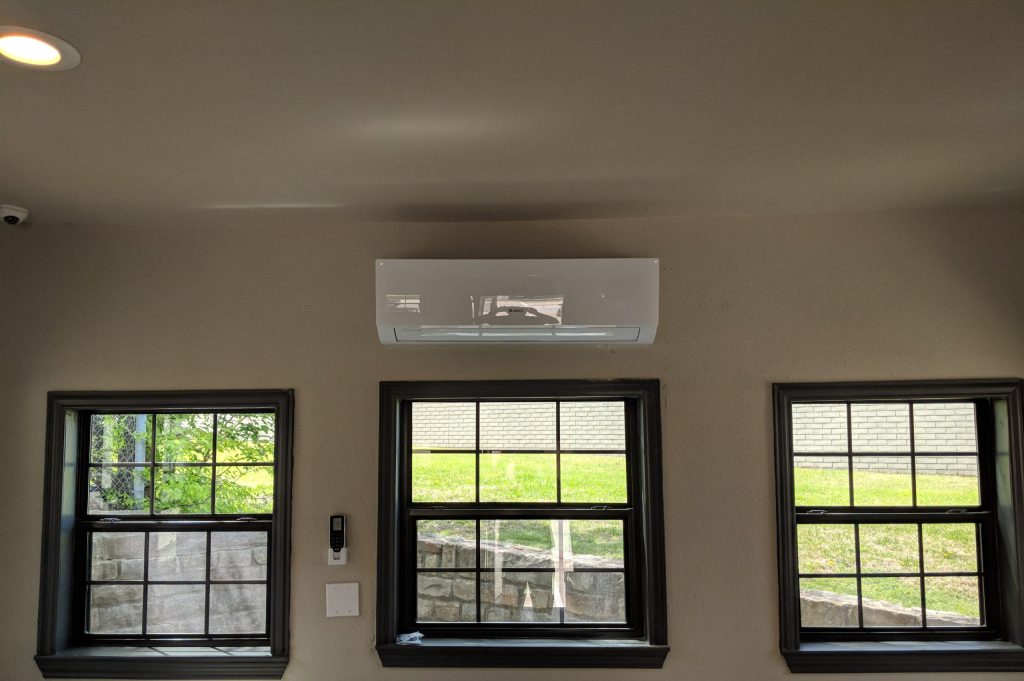If you’ve started exploring mini split systems, you’ve likely noticed there’s quite a variety of options available. From wall-mounted units to concealed ducted systems, each type has its unique advantages and ideal applications. Let’s break down the different types of mini splits to help you understand which might work best for your space. Understanding the different types of MiniSplits can significantly assist in making an informed decision.
The Two Main Categories: Ductless vs. Ducted
Mini split systems fall into two primary categories: ductless and ducted. While both use the same basic technology, they differ in how they distribute conditioned air throughout your space. Let’s explore each type in detail.
Ductless Mini Split Options
Wall-Mounted Units
The wall-mounted unit is what most people picture when they think of mini splits, and for good reason. These units are:
- Typically the most cost-effective option
- Highly versatile in their application
- Easy to install in most spaces
- Energy efficient
However, there’s one notable limitation: wall-mounted units rely on gravity for condensate drainage. If gravity drainage isn’t possible, you’ll need to install a separate condensate pump. Despite this minor drawback, wall-mounted units remain the most popular choice for residential add-on and some small commercial applications.
Ceiling Recessed Cassettes
Ceiling cassettes offer a more discrete installation option and come in two main varieties:
4-Way Cassettes
These versatile units offer:
- Air distribution in four directions
- Built-in condensate pump
- Ideal for larger open spaces
- Compatible with both drop ceilings and sheetrock installations
- Available from most premium and mid-tier manufacturers
One standout variation is Samsung’s round ceiling cassette, which offers a unique aesthetic while maintaining the functionality of traditional 4-way cassettes.
1-Way Cassettes
These units are perfect for:
- Bedrooms and living rooms
- Installation between ceiling trusses
- Modern, streamlined appearance
- Focused air distribution in one direction
Floor-Mount Units
Floor-mount units come in two distinct styles:
Lower Wall Mount
- Available from premium and select mid-tier brands
- Ideal for spaces with limited wall space
- Can mimic traditional radiator appearances
- Perfect blend of old-school aesthetics with modern technology
Recessed Floor Mount
- Excellent for concealment in cabinets or wall chases
- Primarily available in multi-zone configurations
- Limited to select manufacturers like Mitsubishi
- Ideal for specific architectural applications
Ceiling Suspended Units
While less common, these units serve specific purposes:
- Perfect for industrial and commercial spaces
- Ideal for high ceiling installations
- Effective in large, open areas
- Prioritizes function over aesthetics
Ducted Mini Split Options
Ceiling Concealed (Pancake) Units
These low-profile units offer several advantages:
- Compact design (10-14 inches thick for units under 2 tons)
- Wide but shallow profile (20-30 inches wide, 20-27 inches deep)
- Perfect for hidden installations
- Ideal for applications requiring discrete cooling solutions
Traditional Air Handlers
These units most closely resemble conventional HVAC systems:
- Ultra-quiet operation
- Familiar installation locations
- Suitable for whole-house applications
- Popular in both residential and commercial settings
Gas Furnace Options
While available from some manufacturers, this option is becoming less common:
- Traditionally popular in regions with low gas prices
- Declining popularity due to rising gas costs
- Facing potential restrictions as states consider gas appliance bans
- May become less prevalent over the next decade
Choosing the Right Type for Your Space
When selecting a mini split type, consider:
- Available installation space
- Aesthetic preferences
- Budget constraints
- Installation complexity
- Maintenance requirements
- Long-term accessibility needs
Each type has its own set of advantages and considerations. While wall-mounted units might be perfect for a bedroom addition, a ceiling cassette could be ideal for an open-concept living space. Similarly, a ducted system might make more sense for a whole-home solution where maintaining traditional aesthetics is important.
Looking Forward
The mini split market continues to evolve, with manufacturers introducing new variations and improvements to existing designs. As energy efficiency becomes increasingly important and installation techniques advance, we expect to see even more innovations in this space.
Remember, selecting the right type of mini split is just the first step. Proper sizing, installation, and maintenance are crucial for optimal performance. In future posts, we’ll dive deeper into each type of unit, exploring specific applications, installation considerations, and maintenance requirements in greater detail.
Our goal is to help you make an informed decision about your HVAC needs. Whether you’re considering a single room solution or a whole-house system, understanding the different types of mini splits available is crucial to choosing the right solution for your space.



